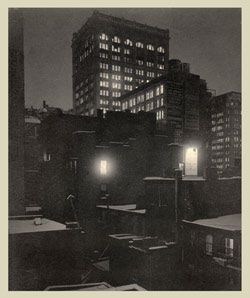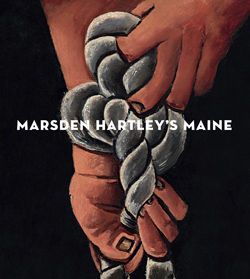Marsden Hartley
Alfred Stieglitz American
Not on view
Alfred Stieglitz tirelessly promoted emerging modern American painters at his gallery, 291, most notably Marsden Hartley, John Marin, Max Weber, Arthur Dove, and Georgia O'Keeffe. These artists gained first-hand exposure to avant-garde European painting, drawing, and sculpture either through study abroad or through Stieglitz's active exhibition program, which included art other than photography from 1907 on.
Stieglitz gave Hartley (1877-1943) his first one-man exhibition in May 1909, and in 1912 he helped finance Hartley's first trip to Paris, where the painter experimented with the compositional structure of Cézanne and the Cubists and the palette of Matisse and the Fauves. Withdrawn and melancholic by nature, Hartley felt ill at ease in Paris and soon moved to Germany, where he found the mysticism of Kandinsky and other Blue Rider painters and the pageantry of the orderly imperial society more to his liking. In Germany, Hartley also began to come to terms with his homosexuality; feeling alienated from the moral strictures of his own country and the fickleness of the New York art world, he chose to live as an expatriate in Berlin.
In this portrait of Hartley, made during a return trip to the United States in December 1915, Stieglitz succeeded in capturing both the inner torment and the vitality of his subject. The glowing eyes suggest the mystical intensity of Hartley's spirit; the heavy, abstract symmetry of the compostion conveys something of the painter's own bold, heraldic style at this time; and the tight framing and closely wrapped coat, scarf, and hat underscore his extreme self-consciousness.
Due to rights restrictions, this image cannot be enlarged, viewed at full screen, or downloaded.




